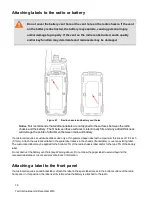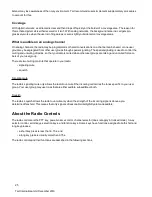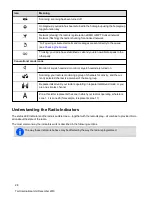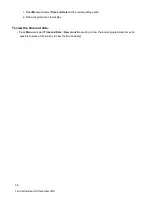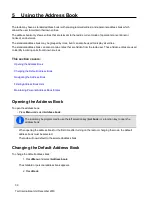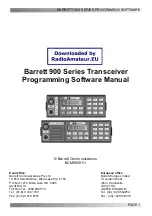
listener may lose awareness of the noisy environment. Tait recommends users implement supplementary procedures
to account for this.
Coverage
With digital networks, a call remains clear and then drops off quickly at the border of a coverage area. The reason for
this is that a digital call is either received or it isn't. With analog networks, the background noise in a call gets pro-
gressively worse when the user is in fringe areas or even slightly outside normal coverage areas.
What is audible on an analog channel
On analog channels, the radio may be programmed so that all conversations on a channel can be heard, or one user
group may be segregated from other user groups through special signaling. The special signaling is used to control the
muting and unmuting of radios, so that your radio is muted when other user groups are talking and unmuted for mem-
bers of your user group.
There are two muting controls that operate in your radio:
• signaling mute
• squelch
Signaling mute
The radio’s signaling mute only allows the radio to unmute if the incoming call carries the tones specific to your user
group. Your user group may use tones that are either audible, subaudible or both.
Squelch
The radio’s squelch allows the radio to unmute only when the strength of the incoming signal is above a pre-
determined threshold. This means that only signals of reasonable intelligibility are made audible.
About the Radio Controls
The radio controls are the PTT key, power/volume control, channel selector (does not apply in trunked mode), 3-way
selector control, scroll keys, selection keys, and function keys. Some keys have functions assigned to both short and
long key presses:
• a short key press is less than 0.75 s, and
• a long key press is usually more than 0.75 s.
The radio controls and their functions are described in the following sections.
25
Tait International Ltd December 2019








